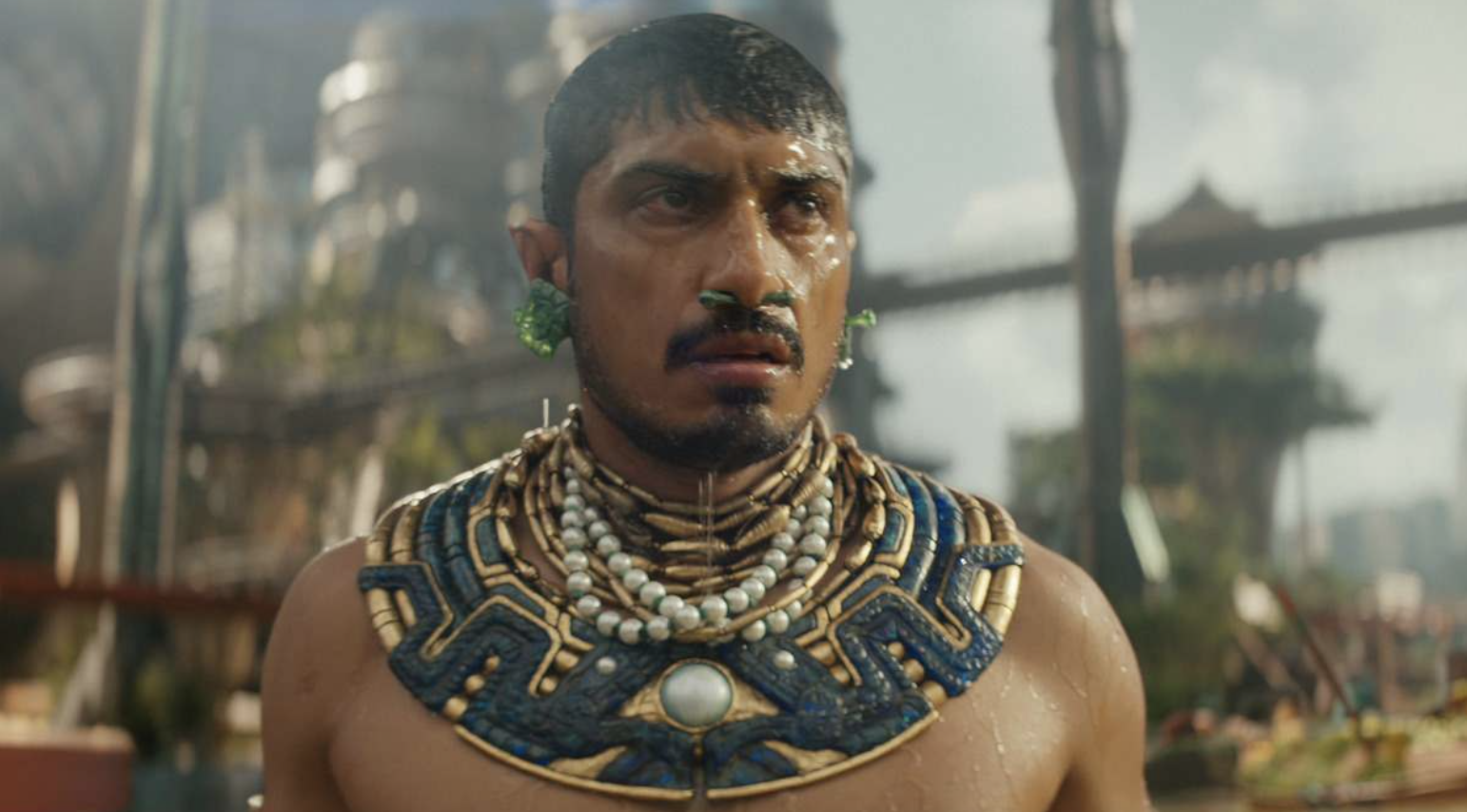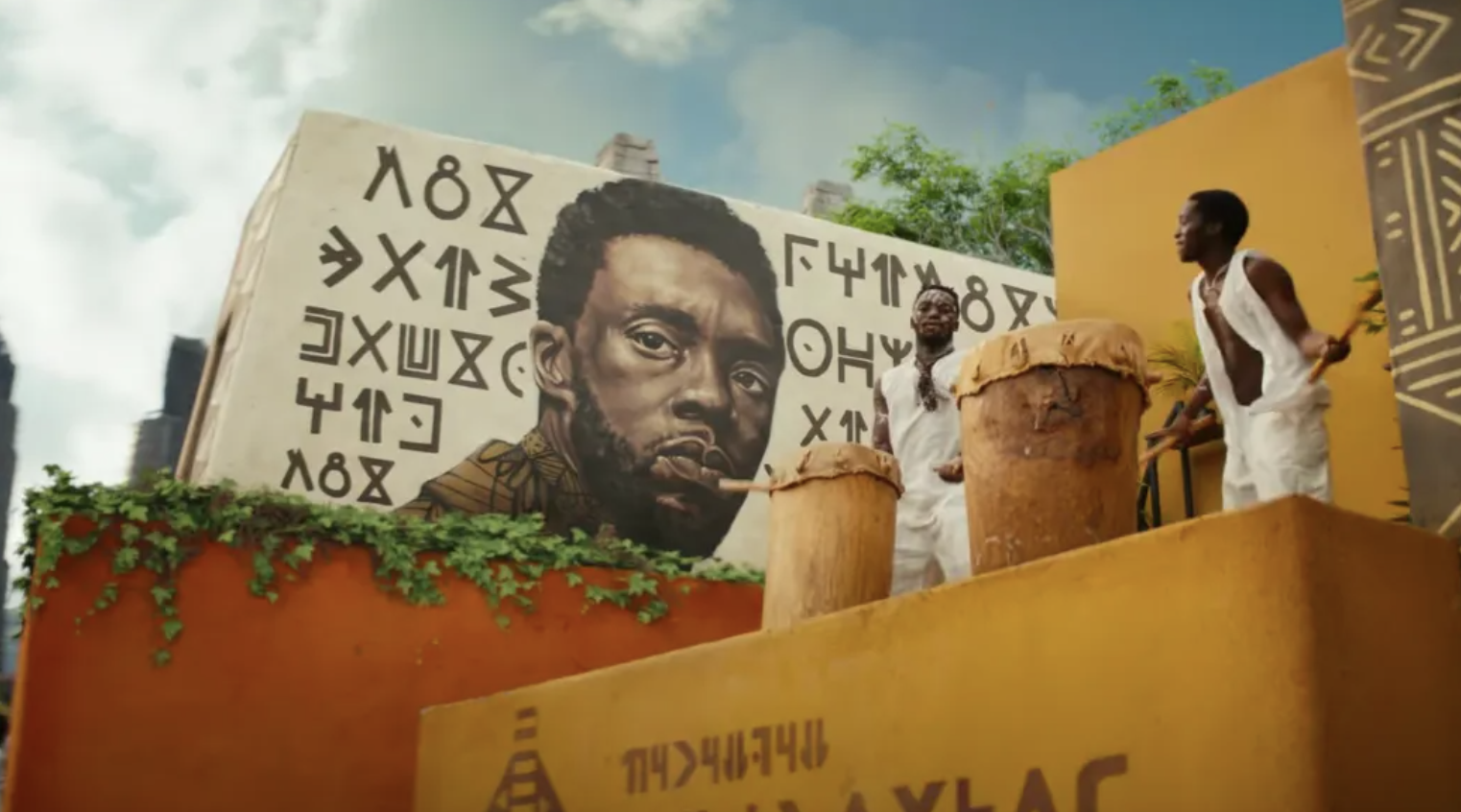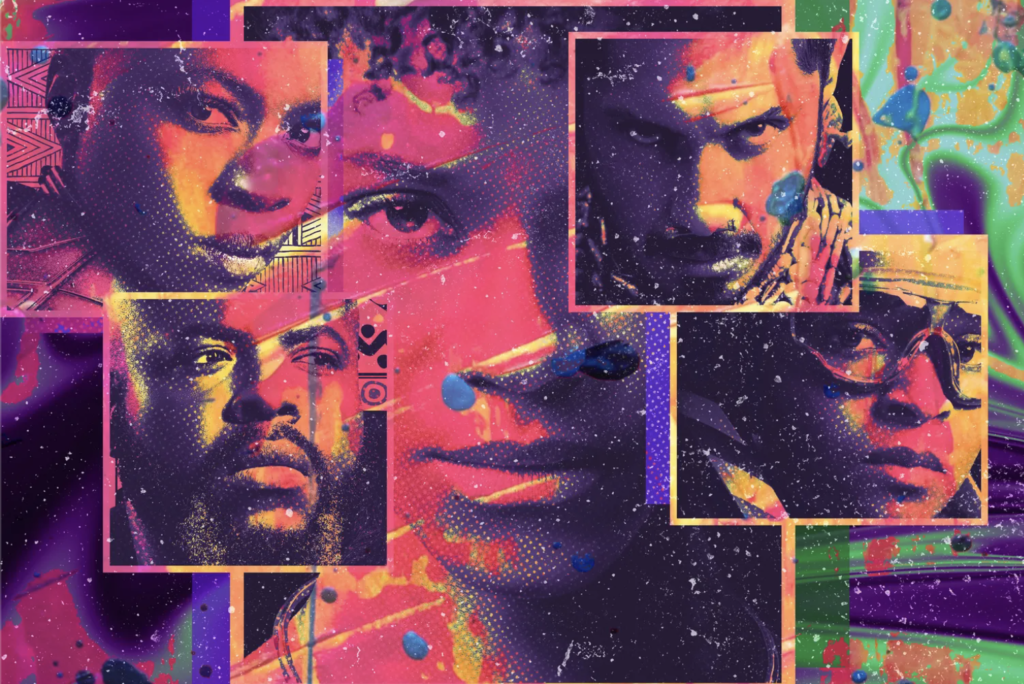Photo courtesy of Getty Images/Marvel Studios/Ringer illustration.
This article is spoiler free!
When Christian Parraguirre, of New Jersey, saw “Black Panther” in 2018, he thought: “it’s about damn time.”
Now, four years later, the franchise made its return with “Black Panther: Wakanda Forever” on Nov. 11, 2022, and has already surpassed $600 million at the global box office – entering its third week of release – and has become the seventh-big Hollywood film of the year worldwide.
Parraguirre’s reaction to the first “Black Panther” was because it was the first big-budget superhero movie with a Black hero, director and majority Black cast. It grossed over $1.3 billion worldwide and became the highest-grossing film directed by a Black filmmaker.
“I enjoyed everything about [the first Black Panther] and I definitely came out making the Wakanda hand sign for a few weeks,” Parraguirre told Slice of Culture.
“We all want there to be more representation and true representation and that’s what we got with the first ‘Black Panther.’”
And in “Wakanda Forever,” it marked the first Marvel movie with several top billed Latino characters and also had heavy inspiration from Mesoamerican mythologies.
“This for me was something I came in expecting to be done accurately and it did not fall short of that,” said Parraguirre, who is half Mexican.
“Being that ‘Black Panther’ had its cast in the first movie to depict their culture in such an enriching way, I knew they would do the same for the Latin American culture, specifically Mesoamerican.
“I do feel that through this film, they have given the Mesoamerican people a platform to hopefully see more of them on the big screen. It’s needed.”
Mexican actor Tenoch Huerta Mejía has been trending on social media since the premiere of “Wakanda Forever,” specifically for his critique of Latine representation in media and role as feathered serpent God K’uk’ulkan or Namor, to his enemies, a character who was created with Maya and Aztec influences.
“In Latin America, especially Mexico, we have a lack of representation. If you turn on the TV, all the people are white. Mexico looks on the TV like a Scandinavian country,” he said in an interview with NBC News.
Namor, also known as the Sub-Mariner, was created in 1939 and was one of the first comic book characters. He was originally created as a leader of Atlantis – the mythical underwater kingdom – but was reworked for the movie. Atlantis was instead hidden in a Mesoamerican realm called Talokan.

Mesoamerica is a historic region made up of modern-day Mexico, Guatemala, Honduras, Belize, El Salvador, Nicaragua and Costa Rica. Their indigenous groups include the Maya, the Olmec, the Aztecs and the Toltec.
But Namor has always been created differently from Marvel’s largely Eurocentric characters, Kurly Tlapoyawa, an archaeologist, told Smithsonian Magazine. “His sleek, dark hair, widow’s peak and pointy ears offer visual cues that he is a ‘nonwhite character,’” Tlapoyawa added.
Costume designer Ruth E. Carter created a series of feathered headdresses for the serpent God K’uk’ulkan. She was recognized for her work in 2019 after winning an Oscar for best costume design for 2018’s “Black Panther.” According to the Los Angeles Times, the designer “was commissioned to create Afrofuturistic garments for the denizens and tribes of Wakanda that felt authentic to continental Africa while also expressing the technological superiority of the fictional, uncolonized nation.”
And she did just that.
“Marvel may have created the first black superhero, but through costume design we turned him into an African king,” Carter said at the Oscars. She also thanked them for “honoring African royalty and the empowered way women can look and lead on screen.”
Like Parraguirre, Patrick Hamilton, of New Jersey, told Slice of Culture that representation is everything.
“I thought [the first Black Panther] was unique,” said Hamilton, who is Jamaican.
“At the time no movie was made with a cast like that. To see people that look like you and to have a main hero that looks like you is big. We usually don’t see that often and that’s what makes Black Panther 2 so special to me.
“I love all people regardless of their race and religion… I hope they continue to add more cultures and their influence. Especially if it involves anything with Hispanic/Latino culture and of course others!”
Hamilton said it was “captivating” to see Latin culture and the Mesoamerican influence play a huge part in the “success” of “Wakanda Forever.”
“Astronomy, architecture, science, medicine, art and food are some of the contributions that have come from their culture,” he added. “Their influence is huge for the cinema and for us as a society. I think we all can learn from each other’s cultures and I believe it was beautifully displayed.”
But one of the things that fans anticipated the most in the return of “Black Panther” was how the series would go on without star Chadwick Boseman. Boseman died at 43 years old on August 28, 2020 after a four-year battle with colon cancer.
After the premiere of “Black Panther,” the film’s signature “Wakanda Forever!” chants and hand signs went viral and was all that many – if not all – fans were doing for weeks.
“Wakanda Forever” also served as a tribute to Bosewick as it showed numerous flashbacks to the first film.

“I believe within Marvel he set the tone for how Black Panther would be ‘felt,’” Hamilton said.
“Being the hero, all eyes were on him and he didn’t disappoint. He had to be on his ‘A-game’ and I think that set the stage for everyone there and anyone who came after. They knew they had to deliver and I believe they did that and then some.
“As for outside of Marvel I think he impacted us in many ways. People fight battles we know nothing about. You never know what someone is going through. For him to be able to contribute to the verse and our hearts and minds was huge. He was amazing. He was an example of how a person can overcome any obstacles you face. Adversity will only stop you if you let it.
“He reminded us of that and his impact will live forever.”
Parraguirre added, “After listening to his story, what he stood for, his message to his audience and how he lived his life, I can say that I wish he could still be here with us today as we need more of who he was in the public eye to influence the current and new generation.
“It is true what they say, about the good being taken away young, Isaiah 57 – the righteous man perishes.”
A third installment of “Black Panther” has yet to be announced.











